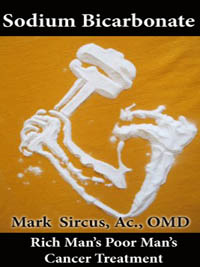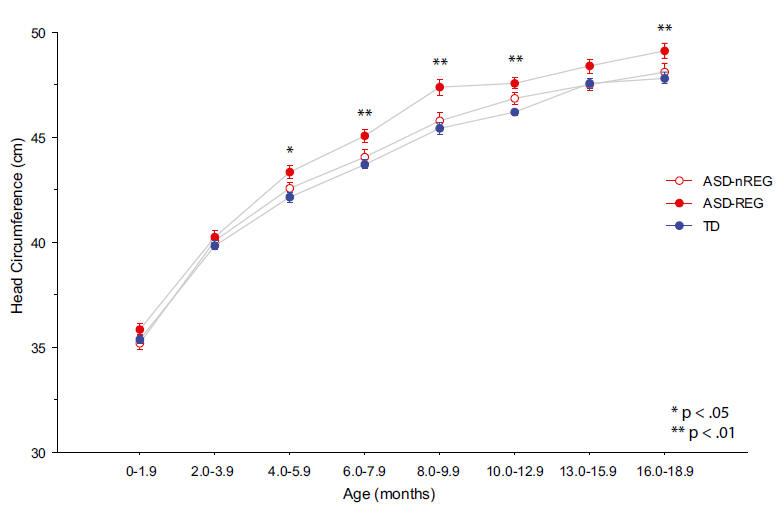|
by Mark Sircus from WinningCancer Website
Contemporary oncology is incapable of giving us the answers and the necessary therapy for cancer patients.
Thus it is our moral and
ethical obligation to try to find the best solutions for the gravest
and most painful disease of our time without them. This book is
going to come as a shock to many doctors and people. Without a doubt
the ideas inside will be resisted, but in the end resistance is
useless. When it comes to sodium bicarbonate in medicine it is an
open and shut case. It is already in wide use and has been for
decades!
Sodium bicarbonate helps
to save countless lives every day. It is also found in the corridors
of orthodox oncology where it is used to keep the toxic chemotherapy
agents from killing people too quickly.
So helpful and elementary itís even instrumental in helping sperm swim up and enter the cervical canal.1
Like magnesium chloride administration possibilities are versatile:
This book is about the application of the least expensive, safest and perhaps most effective cancer medicine there is.
In this very
first chapter enough information is presented to convince doctors
and patients alike to take or prescribe water with dissolved sodium
bicarbonate. By the time one finishes this book it is my belief that
most cancer patients will need no more convincing. No more than a
thirsty person needs convincing to swallow down water when coming
out of the dry desert.
Thatís the only problem
with this treatment - it is too cheap. No one is going to make money
from it so no one will promote it. Those that do will be persecuted
for it. The trouble with doing new studies on bicarbonate is that
they are expensive and no drug company is going to fund a study when
they can't profit from the treatment.
For $2.61 or less one
has a nothing-to-lose-everything-to-gain-cancer-treatment. None of
us dreamed that sodium bicarbonate is already part of orthodox
oncology and is included in many chemotherapy protocols to protect
the patientís kidneys, hearts and nervous systems. Now we find out
on top of everything else that bicarbonate is also a world class
anti-fungicide and could be responsible for the few cures allopathic
oncology manages to come up with.
They are using extremely dangerous poisons and bicarbonate at the same time claiming it is the poisons that are helping when this book is more than suggesting it is the bicarbonate that is doing the heavy work. Worse for them, there are no studies separating the effects of bicarbonate from the toxic chemotherapy agents nor will there ever be.
Administration of some
forms of chemotherapy without bicarbonate would probably kill
patients on the spot.
It is commonly used
prior to, during, and after application of chemotherapy.3
Some studies actually have already shown how manipulation of tumor
pH with sodium bicarbonate enhances chemotherapy 4 again
pointing to the possibility that bicarbonate is the main chemo agent
saving people from their cancers.
Mechlorethamine also known as chlormethine, mustine, nitrogen mustard and HN2 and sold under the brand name Mustargen was the prototype anticancer chemotherapeutic drug. Use of mechlorethamine gave birth to the field of anticancer chemotherapy.
Without baking soda orthodox oncology would never have been able to establish itself for all their patients would probably have died. These chemo drugs are an analogue of mustard gas and were derived from chemical warfare research.
Instructions for its use include:
The basic substances used in IVF flushes are sodium thiosulfate 5 and sodium bicarbonate. Without the bicarbonate and thiosulfate buffers patients would quickly succumb to the chemo poisons.
Itís a picture right out of hell using mustard gas instead of something vastly safer.
Sodium bicarbonate,
potassium chloride, and calcium
We are talking about serious medicine when we talk about sodium bicarbonate.
Earlier and more frequent use of sodium bicarbonate is associated with higher early resuscitability rates and with better long-term neurological outcomes in emergency units. Sodium bicarbonate is beneficial during CPR.6
We are also talking about an exceptionally safe medicine when we talk about bicarbonate. Chemotherapy drugs and corticoids reduce the bone marrow production of cells. In addition, these drugs damage the integrity of the skin tegument, and of the respiratory and gastrointestinal tracts, facilitating the penetration of microorganisms into the host.
Bicarbonate does none of
this.
Sodium bicarbonate
lessens the development of polycystic kidney
On the other hand cancer treatments, including the most commonly used chemotherapy agents as well as the newest biologic and targeted therapy drugs, can harm a patient's heart - sometimes fatally.
Cardiologists at The University of Texas found in their review of 29 anticancer agents that there is no class of cancer drug that is free of potential damage to the heart. It is the organ that seems to be most sensitive to toxic effects of anticancer agents.
Even the newest targeted therapies, designed to attack only cancer cells, can cause cardiotoxicity.8
Bicarbonate ions and
water are two of
We do not have to fear bicarbonate intake.
And in fact, people who live in areas of the world with high amounts of bicarbonate in their drinking waters have a striking decreased mortality rate and a decreased prevalence of disease.
Sodium bicarbonate, though often used as a medicine, is unlike pharmaceutical compounds. It is a natural non-toxic substance that does not require clinical trials for an assessment of toxicity. Spring waters contain bicarbonate ions which are coupled mainly with sodium, potassium, calcium or magnesium ions.
A deficiency of bicarbonate ions in the body contributes to a range of diseases and medical conditions.
Sodium bicarbonate acts as a powerful, natural and safe antifungal agent,9 which when combined with iodine, would probably cover the entire spectrum of microbial organisms. The efficacy of sodium bicarbonate against certain bacteria and fungi 10 has been documented. Its role as a disinfectant against viruses, however, is not generally known. Sodium bicarbonate at concentrations of 5% and above was found to be effective with 99.99% reduction viral titers on food contact surfaces within a contact time of 1 min.11
Throughout this book we will see reports of doctors using bicarbonate to defeat fungal infections. 12 But it was not until Dr. Simoncini came along though that the concept arose that what these doctors where unknowingly doing was cutting down the fungal fields of cancer.
This logo of the Arm & Hammer baking soda is not a joke.
Sodium Bicarbonate is just as advertised, it comes into any job you use it for just like a muscleman wielding a hardened mallet. It's good that it is strong! This book is telling you to take him into your own home and use him to kick butt on your cancer.
For instance: The treatment of Interstitial Cystitis and Painful Bladder Syndrome depends on "rescue" instillations (or cocktails) of customized solutions that can be placed in the bladder and immediately help reduce pain and discomfort. If the anesthetic is alkalinized with a precise amount of sodium bicarbonate, it dramatically improves its ability to pass through the mucous to reach and soothe the irritated nerves and tissues beneath. 13
Well, instead of a
muscleman with a mallet, an even better image would be a strong
janitor mopping up the messes and carrying the poisons away. This
strong janitor protects tissues and leaves an alkaline film or trail
behind to make sure everything stays safe. In medicine, sodium
bicarbonate is the cleaning and security man proven loyal through
decades of faithful service.
That's right! You can just go to the supermarket and follow, in part, the instructions that are right on the box for maximum oral doses.
Sodium bicarbonate is only classified as a medicine if it is in injectable form. Otherwise it is a legal food item found in every supermarket useful for literally hundreds of applications. It is so useful, effective and safe that it will even help rid us of our cancers.
It is like they had a chemical genius chained and enslaved in the basement. Meanwhile upstairs, while sitting at their desks, they pretend bicarbonate is nothing more interesting than a saline solution or water.
They end up giving all the credit to their poisonous treatments while hiding as much as possible the terrible toxicity and life threatening side effects.
The National Cancer Institute recommends that sodium bicarbonate for treatment of Oral mucositis, which is an inflammation of oral mucosa resulting from chemotherapeutic agents or ionizing radiation. 14
There are no promises or guarantees about being cured just as there are no guarantees you will be alive tomorrow.
There are other factors beside biochemical ones that have a great deal of leverage over our health and our fate. One needs a will to live plus an openness that includes the ability to listen for ways to find the most appropriate form of cancer treatment.
Sodium bicarbonate is as
safe as chicken soup and probably more effective than any other
single element in any cancer protocol and it can be taken simply
through oral administration making it a treatment for the masses as
well as the elite who only want the best. There are other basic substances like iodine, magnesium chloride and even THC (medical marijuana in oral form) which run neck and neck with bicarbonate's ability to confront cancerous tissues. And there are other substances that should be used also to heighten effectiveness of treatment. There are many natural medicinals that are of proven help to cancer patients.
THC, if legal, would cost little more than bicarbonate because it's a weed you can grow in your own backyard.
A month of heavy duty magnesium chloride treatments would not reach much above fifty dollars.
Chelation of mercury is an absolute necessity and it is best to find the most natural ways of doing that. But when all is said and done nothing is easier then to pull down a box of Arm and Hammer off the shelves and start taking it orally to defeat your cancer. Nothing could be simpler.
But, as in anything, there are limits to the bicarbonate's power. It will not, for instance, overcome ones' magnesium, iodine and selenium deficiencies. A person still needs plenty of clean water and sun (vitamin D3). (See my 900 page book Winning the War on Cancer for a discussion of some of the issues including the Rising Tide of Mercury story and natural chelation methods. This work will also be presented in my upcoming book Natural Allopathic Medicine)
The choice of the word madness here is quite literally for several studies have shown chemotherapy drugs to do damage to the brain. It is going to come as a great embarrassment to oncologists to learn that the most basic substance in their chemo protocol - sodium bicarbonate - is not only the safest but the most effective item in their hands.
It certainly will not give the patient "chemo brain," which can include:
|



